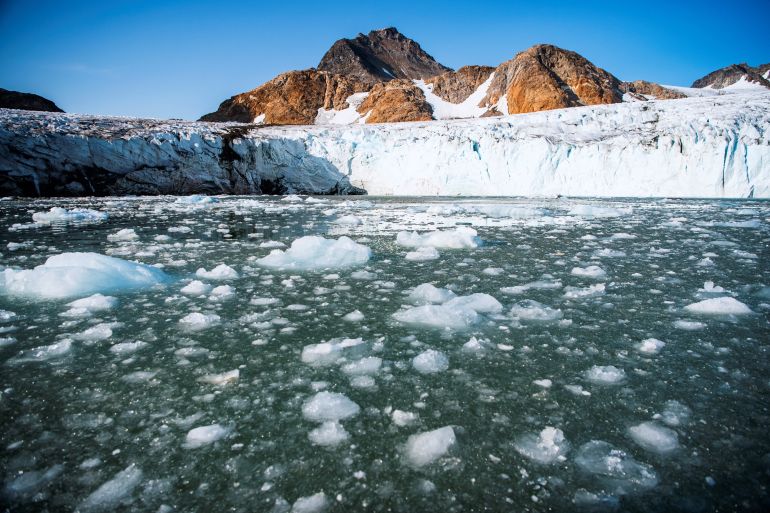New Zealand faces major sea rise ‘much sooner than we thought’
While the global sea level is expected to rise 50cm by 2100, for large parts of New Zealand, it could be 1 metre because the land is sinking too.

The sea level is rising twice as fast as previously forecast around parts of New Zealand, according to research published on Monday, putting the country’s two largest cities at risk decades earlier than expected.
Government-backed data amassed from around the country’s coastline found some areas are already sinking 3-4mm (0.11-0.16 inches) per year, speeding up a long-expected threat.
Keep reading
list of 4 itemsKerim’s Climate Odyssey: The Climate Change Classroom on the Sea
Has Biden let down climate activists?
How much is climate change to blame for heatwaves in South Asia?
The projections, labelled “a bit terrifying” by one expert, are the result of an extensive five-year, government-funded research programme – NZ SeaRise – that was the combined work of dozens of local and international scientists.
Their prognosis means authorities have much less time than expected to introduce climate adaptation plans, including relocating coastal communities.
NZ SeaRise co-leader Tim Naish, a professor at Wellington’s Victoria University, said while the global sea level is expected to rise about 0.5 metres (19.8 inches) by 2100, for substantial parts of New Zealand it could be closer to 1 metre (39.4 inches) because the land is sinking at the same time.
It is stark news for the capital city, Wellington, which could expect a 30cm (11.8 inches) sea level rise by 2040 – a level that had not been expected before 2060.
With that rate of rise, Wellington residents can expect once-a-century flood damage every year on average.
“We have less time to act,” Naish said. “You are going to see the impacts of quite damaging sea level rise much sooner than we thought. Roads and properties will be inundated. Yes, it is a bit terrifying but there is still time and I think that is the way to look at it.”
Data shows the southeast coastline of the more populated North Island is the most exposed, but numerous seaside communities and towns will be hit.
Auckland, which with 1.7 million residents is comfortably the country’s largest city, is especially vulnerable.
It is predicted the sea level will rise 50 percent faster in the city’s downtown waterfront and in several central-city suburbs, with wide-ranging implications for house prices and insurance rates.
NZ SeaRise has developed an online tool to let residents and authorities check forecasts for their own stretch of coast – allowing them to assess the risk of flooding and erosion.
“We still have time but we don’t have time to sit on our hands any more,” Naish said.
“If you’re a council representative or you’re a developer, or you’re a decisions maker in the coastal areas of New Zealand, you need to start thinking right now what the plan is for adapting to that sea level rise.”
Not inevitable?
Prime Minister Jacinda Ardern said adaptation planning was already under way, including budgeting for the relocation of some communities and infrastructure away from vulnerable coastlines.
“The first port of call isn’t necessarily managed retreat because there are a range of options that can be used,” she told Radio New Zealand.
“We’re working alongside local government and insurers to work through who bears the costs of some of these options. The cost that needs to be borne won’t fall on one party.”
Ardern said New Zealanders should not accept that sea level rises are inevitable beyond those predicted for the near term, and every citizen should do all they can to reduce emissions and diminish the effects of climate change.
Global sea level rise is caused by thermal expansion of the ocean, by melting land-based glaciers, and by the melting of the Greenland and Antarctic ice sheets.